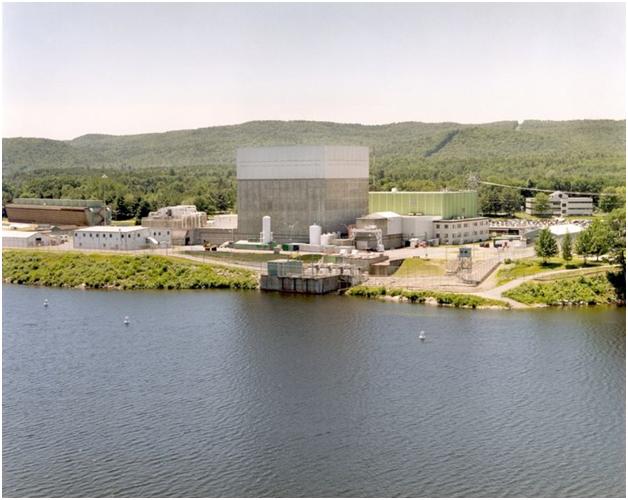Nuclear Reactors 44 - Vermont Yankee Bites the Dust!
I have written a number of posts about the Vermont Yankee nuclear power plant and the political struggle in Vermont to close the plant. Vermont Yankee is located in Vernon, Vermont and its General Electric boiling water reactor generates about thirty five percent of the electricity used in Vermont. It began operating in 1972 and its original license expired in 2012. The NRC extended the plant license for an additional twenty years in 2011. Entergy, the company that owns the plant, has just announced that they are going to permanently close the plant in 2014.
In 2006, Entergy applied to the NRC for a twenty year license extension for the plant to continue to operate. One hundred demonstrators protested outside the offices of Entergy Nuclear and some were arrested. In 2007, part of the west cooling tower collapsed because of corrosion of bolts and rotting timber. The NRC concluded that there was no public danger and Entergy promised to do a better job of inspecting the facility. Governor Jim Douglas felt that the accident raised serious questions about the safety of the plant. A review by a panel appointed by the Vermont Senate concluded that the plant was being run safely and the NRC agreed.
In 2009, there was a claim that groundwater had been contaminated by the reactor. A spokesman for Entergy said that there was no contamination. In early 2010, tritium was found in the groundwater under the plant and the levels rose above the safe limit. By mid-February, a leak that had been found in some steam pipes was repaired. Cesium-137 was also found in the soil. It was thought to have been left over from fuel rod problems in the 1970s and was not considered a serious threat to public health. One hundred and fifty activists marched from Montpelier’s city Hall to the Vermont State House to present a petition of twelve thousand signatures in favor of closing Vermont Yankee.
In 2010, Entergy requested that Vermont issue a new state certificate of public good. One hundred and seventy five anti-nuclear activists marched one hundred and twenty six miles from Brattleboro to Montpelier to block the relicensing of the plant. The state legislature voted against even allowing the Vermont Public Service Board to consider issuing the state certificate to allow the plant to continue to operate. Peter Shumlin, a staunch opponent of Vermont Yankee was elected Governor of Vermont in November of 2010. Analysts have suggested that his opposition was a key factor in him winning a very close election. Right after the election, Entergy tried to find a buyer for Vermont Yankee.
In early 2011, tritium was again discovered at higher than normal levels in the groundwater and Governor Peter Shumlin expressed concern. In March of 2011, six hundred people spent a weekend protesting outside the Vermont Yankee plant.The NRC concluded review of Vermont Yankee in March and issued the requested twenty year extension. A month later, Entergy filed a lawsuit against Vermont to keep the plant in operation. Entergy won in court in 2012. An appeal to a higher court by Vermont failed in 2013. The court said that only the Federal government had the authority to determine whether or not the plant would be allowed to continue to operate.
Entergy has just announced that it is closing the Vermont Yankee plant permanently in 2014 because low cost natural gas from fracking was making the plant unprofitable to operate, especially in view of the rising maintenance and operating costs. As I have said in the past, ultimately, the end of nuclear power will be tied to fact that it is just not an economical power source. Unfortunately, public safety is a secondary concern to people who operate these plants.
Vermont Yankee Nuclear Plant:
